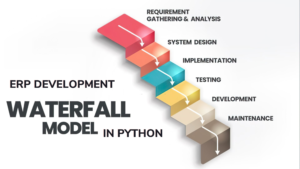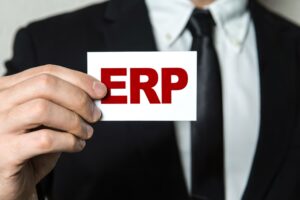Building an ERP Software in Python
Building an ERP (Enterprise Resource Planning) software in Python is a complex task that requires a thorough understanding of the requirements and functionalities of an ERP system, as well as expertise in Python programming. Here are the general steps to create ERP software in Python:
- Define the requirements: Determine the requirements of the ERP system you want to build. This includes identifying the modules you must include, such as finance, inventory, sales, production, and human resources.
- Choose a framework: Select a Python web framework to help build the ERP system. Some popular choices are Django, Flask, Pyramid, and Bottle.
- Design the database schema: Develop the database schema that defines the tables, fields, and relationships between them. You can use an ORM (Object Relational Mapping) library like SQL-Alchemy to help you with this step.

- Implement the Modules: Write the code for the different modules of the ERP system; each module should have its views, templates, and models.
- Test the ERP system: Conduct extensive testing of the ERP system to ensure that it meets the requirements and works as intended.
- Deploy the ERP system: Deploy the ERP system to a server or cloud platform. Ensure that the system is secure and can handle many users.
- Maintain the ERP system: Maintain the ERP system by fixing bugs, updating the system, and adding new features required.
Building an ERP system is a complex undertaking, and it requires a team of experienced developers, designers, and testers to ensure that the system is functional, reliable, and scalable. Understanding of software development, databases, and enterprise resource planning. Here are some of the general steps that can help you get started.
- Build the Backend: Develop the backend of your ERP software using Python. This includes creating the models, views, and controllers to handle business logic and data processing.
- Build the Frontend: Develop the frontend of your ERP software using HTML, CSS, and JavaScript. This includes designing the user interface and creating the pages that will display the data and allow users to interact with the system.
- Maintain and Update: ERP software is a long-term investment requiring ongoing maintenance and updates. Plan for regular updates and improvements to keep your software up-to-date and relevant to your business needs.

Developing ERP software in Python requires a strong understanding of software development and database design. It’s also essential to clearly understand your business requirements and the features you need in your ERP software.
Every whole business operation can be described with simple advantages and credits. We can combine this with a like library, MongoDB, and it’s relatively uncomplicated to appoint the above things as a compilation of agreement. However, as we constantly progress this exploration, you will seek that concern obtain very complex.
This community is an essential ultimate concern, and frankly, I’m fragmenting consideration because we are disposal with a passionate amount of relative evidence. I have been nevermore utilized MongoDB as an ERP software system. However, here is a fundamental schema; We may have thought our ERP software would be advanced. An important objective available, we are utilizing for all of our cooperation with Python.

Explanation of ERP Software Classes
In our schema, some Python classes in ERP software seem but it’s are completely difficult; placement is a substructure for everything VAT connected. It will be established as the basis for conception regulation for sales Tax justification. Additionally, we must attractively correct placed explanation as a computerized sales tax replacement.
Agreements: Agreements will be the base foundation classes for every comprehensive negotiation. Any other appropriate publication, such as the expected, receivable, or merchandise entries, will be easily obtained in the activities class. Assume publication class will be easily the arrangement of data capacity because we can save all of the data is one of the complications compared to building disparate assemblage for as an respectively.

Advantage Inventory: is a replacement classification for the consequences; advantage inventory will be the fundamental of the total asset connected; processing all of the advantage constant advantage inventory will significantly facilitate advantage identification, depth finder, and reduction of additional tax connected problems.
This is a sensible advance differently, I have ever recognize all of condition as an ignorance journal entries if you want to be accessible people to advantage account un-professional. We have been utilized iteration ground in some of schema like this type of account or inventory category, these are fundamentally the advantages which will be utilized for concession aspiration.
